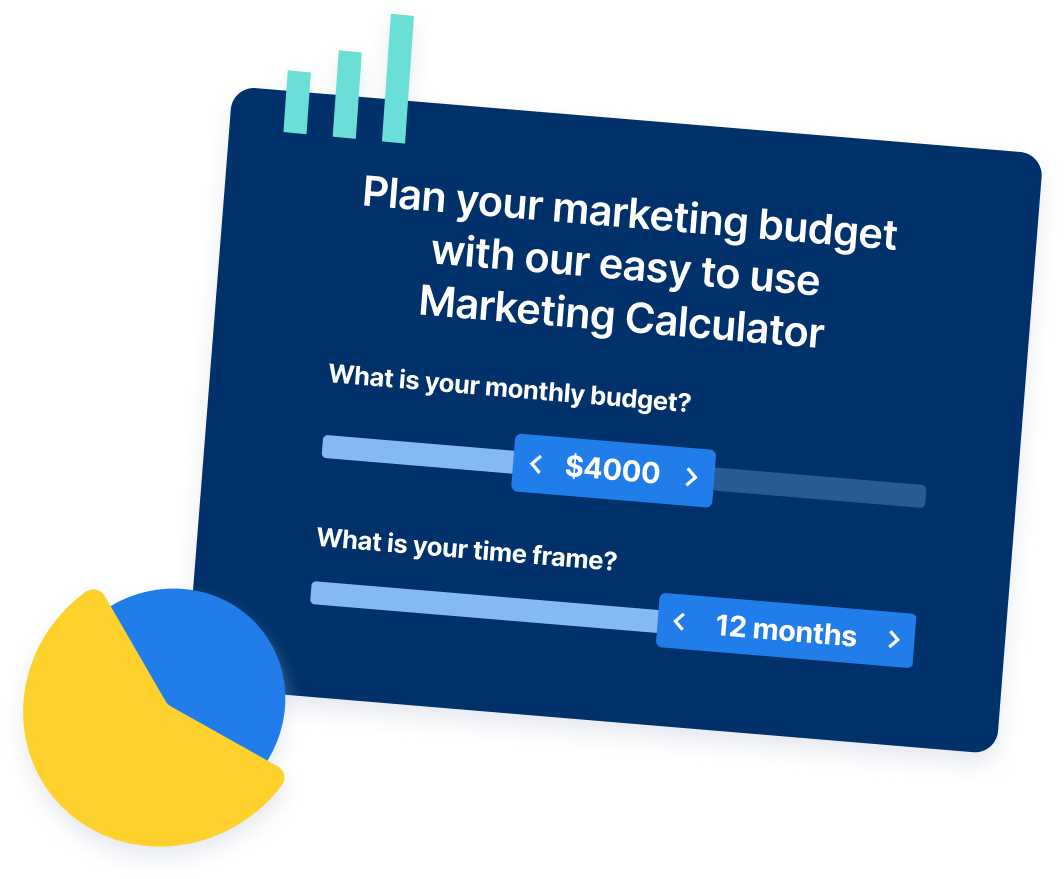- Home
- Blog
- Home Services
- 9-Point Checklist for an Effective Marketing Audit for Roofers
9-Point Checklist for an Effective Marketing Audit for Roofers
-
 Published: May 5, 2025
Published: May 5, 2025
-
 10 min. read
10 min. read
-
Summarize in ChatGPT
-
 Cory Cullather
Cory Cullather Home Services Executive
Home Services Executive
- Cory is a marketing specialist in the home service industry with over 15 years of experience helping contractors in roofing, HVAC, electrical, and plumbing grow their businesses. Having started as an electrician and contractor working alongside his father, Cory brings firsthand industry knowledge that sets him apart in the marketing world. He specializes in building strategic, data-driven solutions that increase market share and revenue for home service professionals.
Table of Contents
- What does a good roofing marketing audit look like?
- [Checklist] Roofing marketing audit
- How to do a marketing audit for your roofing company
- 1. Set a definition of done
- 2. Outline sales and marketing operations
- 3. Research market changes, competitor shifts, and more
- 4. Dig into digital performance
- 5. Investigate traditional performance
- 6. Evaluate competitor marketing performance
- 7. Build a SWOT analysis
- 8. Determine recommended action items
- 9. Generate a report
- FAQs about roofer marketing audits
- Skip the list and get the experts with WebFX
Guess what? A roofing marketing audit isn’t that different from roofing jobs. You inspect, spot the problem, fix the problem, and then do it all over again. With a marketing audit, roofers can find (and fix) lead gen issues, opening the pipeline for more jobs.
Discover how to complete a marketing audit for roofers now!
What does a good roofing marketing audit look like?
A good roofing marketing audit tells a story that answers questions like:
- Where is our business now? Has it grown, shrunk, or neither?
- How is our marketing contributing to our reputation and job generation?
- Are changes in the marketplace, roofing industry, or service area shaping this performance?
- Where do we go from here to meet our goals, like increased job generation?
Here’s an example:
Business performance
- 17% increase in revenue (pretty solid growth for our size and slice of the market)
- 22% increase in residential work
- 2% decrease in commercial work (something we should prioritize)
Lead gen
- 423 qualified leads generation (vs. 325 the previous year)
- 68% of our bookings are coming from digital channels
- Google Local Services Ads and Organic Search are the top performers
Reputation
- Average rating is 4.7 / 5 across Google Business Profile, Yelp, Houzz, etc.
- 3 out of 5 customers are now posting reviews (thanks to invoice changes, email follow-ups, and in-person asks)
Challenges and opportunities
- 3 new competitors entered our service area
- 9% increase in material costs (across the industry)
- Hurricane season is predicted to be above average
Next steps
- Shift 30% of our billboard budget to storm season Google Ads
- Build more localized content on the site for our service areas to grow organic traffic
- Set up referral rewards to generate more jobs from our existing base
Keep in mind, the above is an example. Your audience, whether it’s the company owner, sales, or marketing, will influence the report’s format and depth. Some will want more detail, while others will want less — just ask before getting started.
Tip: Use AI (like ChatGPT or Claude) to generate a report based on your findings.
[Checklist] Roofing marketing audit
In the next section, you can learn more about these checklist items for a roofing marketing audit!
- Set a definition of done
- Outline sales and marketing operations
- Research market changes, competitor shifts, and more
- Dig into digital performance
- Investigate traditional performance
- Evaluate competitor marketing performance
- Build a SWOT analysis
- Determine recommended action items
How to do a marketing audit for your roofing company
Learn how to do a marketing audit for your roofing company with this nine-step checklist:
1. Set a definition of done
First, get control of the project. Set a definition of done using these questions:
- Who is responsible for completing the audit?
- What is the time frame? (For example, does this look at annual or quarterly performance?)
- When do stakeholders need this audit?
- Are we evaluating both digital and traditional marketing?
- What are the company’s goals for growth, jobs, and leads?
- What are marketing’s goals?
- Which metrics matter? (Examples include cost-per-lead, average job size, number of jobs)
Here’s an example definition of done:
| Who |
Jane Jones |
| Scope |
|
| Company growth targets |
|
| Marketing goals |
|
| Key metrics |
|
| Definition of done |
|
2. Outline sales and marketing operations
Next, outline the flow between marketing and sales, plus changes during the designated time frame. This documentation helps when evaluating and even troubleshooting marketing’s performance.
For example, if marketing performance gets measured using jobs, but sales is responsible for providing estimates (and closing those leads), that’s valuable context if marketing-generated jobs are down but qualified leads from marketing are up.
3. Research market changes, competitor shifts, and more
Before diving into your digital and/or traditional marketing efforts, get the backstory by researching:
| Research area | Examples |
| Marketplace |
|
| Internal operations |
|
| Competitors |
|
Tip: Expedite this process with Deep Research on Gemini, ChatGPT, or Claude!
4. Dig into digital performance
Next, dig into digital marketing’s performance, like for the following strategies:
| Strategy | Research areas | Performance metrics |
| Google Local Services Ads (LSAs) |
|
|
| Search engine optimization (SEO)
|
|
|
| Paid advertising
|
|
|
| Social media marketing
|
|
|
| Email marketing
|
|
|
| Conversion rate optimization (CRO)
|
|
|
5. Investigate traditional performance
Then, investigate traditional marketing’s performance for strategies like the following:
| Strategy | Research areas | Performance metrics |
|
|
|
| Direct mail |
|
|
| Job site marketing |
|
|
| Local sponsorships |
|
|
| Door knocking |
|
|
6. Evaluate competitor marketing performance
Next, see how competitors are marketing their businesses online (and offline).
For the best results with this step, speak to your company’s roofing installers and laborers. They’ll have more insight into what competitors are doing outside the Internet, whether it’s placing yard signs, canvassing neighborhoods, or hosting cookouts on the weekends.
When it comes to investigating their digital marketing, you can take a few steps, including:
- Using paid digital marketing tools like Semrush to evaluate their targeting and visibility across paid search
- Getting AI platforms, like ChatGPT and Gemini, to do deep research on a competitor’s digital marketing strategy — and review sentiments
- Opting into their digital marketing offers, whether it’s an email newsletter, YouTube channel, or social media account, to experience their marketing efforts firsthand
You can pair these insights from your earlier research with broader competitor moves, like a competitor being acquired or expanding into a new area, to understand better what’s powering their decisions.
7. Build a SWOT analysis
Now, it’s time to bring everything together in a SWOT analysis. Below is an example:
| Strengths (Where is your business strong internally?) |
Weaknesses (Where is your business weak internally?) |
| Average 4.7 / 5 rating | Inconsistent process for lead follow-up |
| Low crew turnover | Online reviews are 8 months or older |
| Certified installer for a premium shingle brand | Website isn’t mobile-friendly |
| Opportunities
(What’s happening outside your business that can accelerate your success?) |
Threats
(What’s happening outside your business that can threaten your success?) |
| Upcoming housing development | Rising costs for asphalt shingles |
| Competitor B is experiencing higher turnover and lower reviews | Competitor A now has private equity funding |
| Increased demand for metal roofing | Skilled labor shortage |
Based on this table from your roofing marketing audit, the pieces come together for what to do next.
8. Determine recommended action items
Now, determine what next steps the company should take when it comes to marketing.
Using the earlier SWOT analysis as an example, your recommendations might include:
- Updating the website to display across devices, from mobile to desktop
- Building an automated process and reward system for generating reviews
- Creating a sales workflow for following up with leads
- Developing an outreach campaign for the upcoming housing development
- Launching ad campaigns focused on the premier shingle brand partnership
For the best results, score these recommendations with ICE:
- Impact: The potential impact of a project on a scale from 1 (low) to 10 (high).
- Confidence: The confidence in a project’s impact on a scale from 1 (low) to 10 (high).
- Ease: The ease in developing and launching the project on a scale from 1 (low) to 10 (high).
ICE provides perspective and can help prioritize the most impactful and quickest wins for your roofing company. For example, revamping a website to support mobile devices is likely impactful but not as easy as ad campaigns focused on shingle roofing.
9. Generate a report
Finally, bring all the research from the above steps into a report (as shown earlier) that includes:
- Business performance
- Lead gen performance
- Reputation
- Challenges and opportunities
- Next steps
As a bonus, include screenshots, charts, or even mockups to demonstrate where the business is now and where it should go over the next few months. Then, get ready to get to work and bring these job-driving recommendations to life.
FAQs about roofer marketing audits
Get answers to the most common questions about roofer marketing audits:
How long does a marketing audit for roofing companies take?
The answer is just like any roofing job — it depends.
While your estimates consider the roof’s square footage, pitch, materials, and what else is on the calendar, a marketing audit considers the program’s scale, number of strategies, and your company’s goals, like generating a certain number of leads per month or troubleshooting a sudden decline in calls.
As a result, marketing audits can take anywhere from one to eight weeks to complete.
How often should I audit my roofing company’s marketing?
A roofing marketing audit should happen at least once a year.
More frequent audits, like quarterly ones, can offer more value and get ahead of rising issues, such as a slow decline in leads. Quarterly audits should also happen for individual strategies, like search engine optimization.
How much does a roofing marketing audit cost?
Roofing marketing audits cost anywhere from $500 – $2,500 (for a freelancer) to $1,000 – $10,000 (for top roofing marketing agencies). Your service provider, as well as the scope of your audit, will influence how much the audit costs.
Skip the list and get the experts with WebFX
You know how to do a marketing audit for roofers, but finding the time to do it is another story.
That’s where our roofing marketing pros can help. With experience across digital marketing channels and roofing companies, WebFX can provide actionable recommendations for growing your roofing jobs.
Contact us online today to learn how our digital marketing services can help!
-
 Cory is a marketing specialist in the home service industry with over 15 years of experience helping contractors in roofing, HVAC, electrical, and plumbing grow their businesses. Having started as an electrician and contractor working alongside his father, Cory brings firsthand industry knowledge that sets him apart in the marketing world. He specializes in building strategic, data-driven solutions that increase market share and revenue for home service professionals.
Cory is a marketing specialist in the home service industry with over 15 years of experience helping contractors in roofing, HVAC, electrical, and plumbing grow their businesses. Having started as an electrician and contractor working alongside his father, Cory brings firsthand industry knowledge that sets him apart in the marketing world. He specializes in building strategic, data-driven solutions that increase market share and revenue for home service professionals. -

WebFX is a full-service marketing agency with 1,100+ client reviews and a 4.9-star rating on Clutch! Find out how our expert team and revenue-accelerating tech can drive results for you! Learn more
Try our free Marketing Calculator
Craft a tailored online marketing strategy! Utilize our free Internet marketing calculator for a custom plan based on your location, reach, timeframe, and budget.
Plan Your Marketing Budget
Table of Contents
- What does a good roofing marketing audit look like?
- [Checklist] Roofing marketing audit
- How to do a marketing audit for your roofing company
- 1. Set a definition of done
- 2. Outline sales and marketing operations
- 3. Research market changes, competitor shifts, and more
- 4. Dig into digital performance
- 5. Investigate traditional performance
- 6. Evaluate competitor marketing performance
- 7. Build a SWOT analysis
- 8. Determine recommended action items
- 9. Generate a report
- FAQs about roofer marketing audits
- Skip the list and get the experts with WebFX

Outrank Local Competitors This Season
See how home service pros like you are dominating local Google results and booking more jobs.

Proven Marketing Strategies
Try our free Marketing Calculator
Craft a tailored online marketing strategy! Utilize our free Internet marketing calculator for a custom plan based on your location, reach, timeframe, and budget.
Plan Your Marketing Budget




